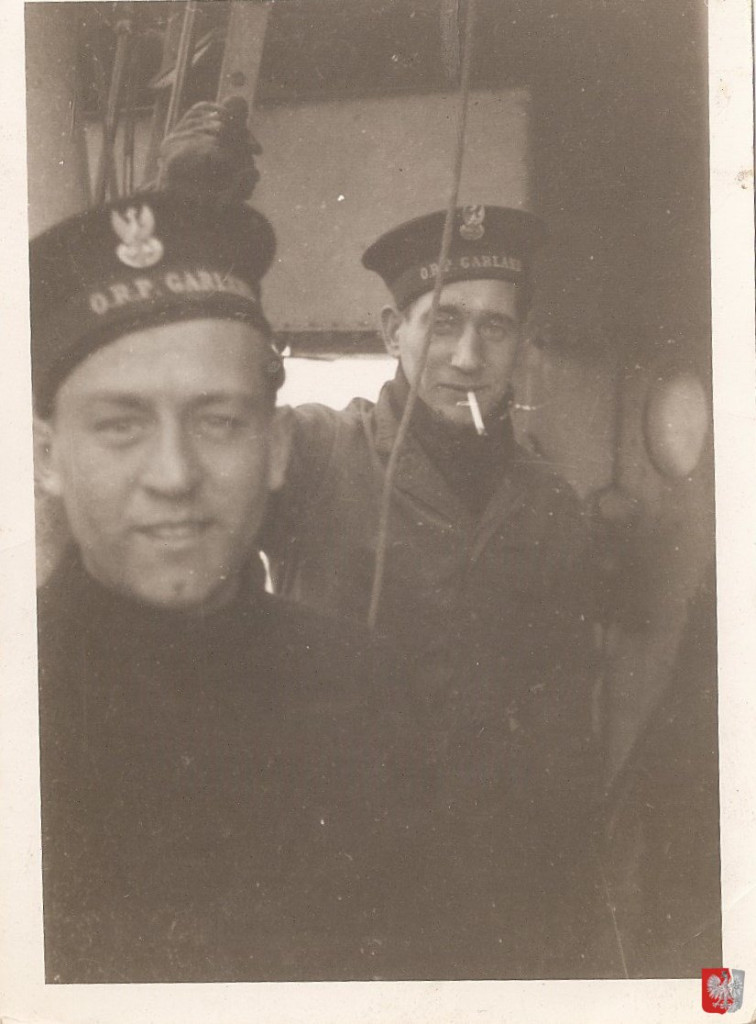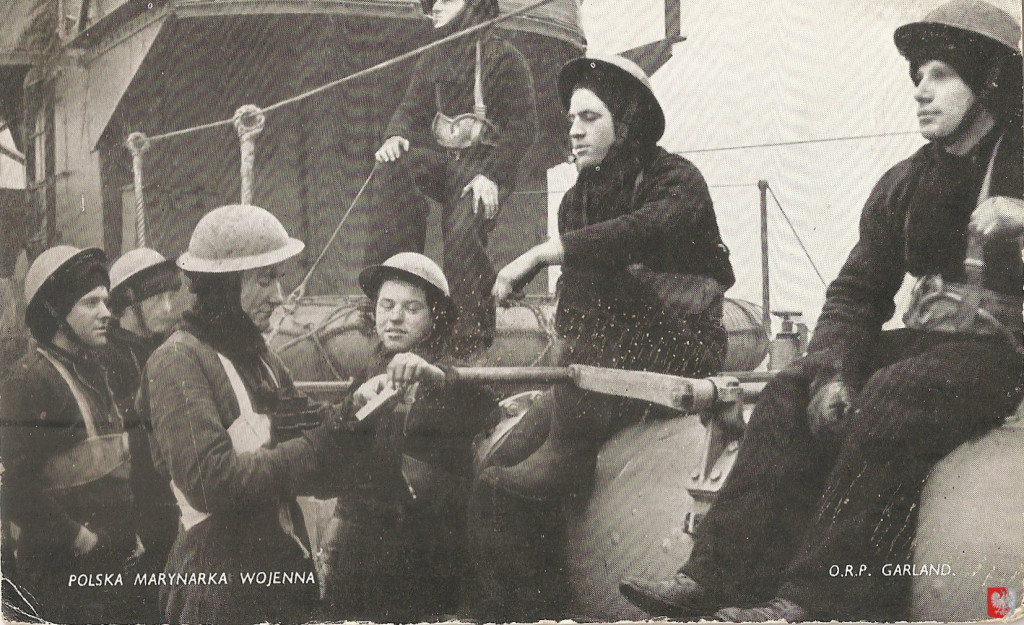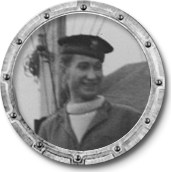
Polish Naval Memories of WWII
During the 25th May 5 corvettes, 3 trawlers and 2 submarines further reinforced the escort and met with the 35 merchant vessels being protected. All this time German long range Focke-Wulf Condor aircraft shadowed the Allied ships. On the evening of the 25th the first three attacks by torpedo and dive-bombers took place. Early on the morning of the 26th U-boat 703 penetrated the escort screen and sank the first merchantman.
On the 27th, south of Bear Island, a mere 45 minutes flying time from German air bases in northern Norway, the weather improved, and 13 air attacks were launched against the convoy. Six merchantmen were sunk. ORP Garland drove off a German submarine, but was then herself attacked by seven Ju 88s. Four very near misses caused six fires on board and the central fire control and gun turret number 2 were put out of action. Pawlowicz, the war correspondent, wrote:
“ Then I heard a long, shrill and, and as it seemed to me, everlasting whistle of falling bombs. Against the background of previous explosions I saw, as in a nightmare, the dark spear-like shapes of four bombs. I instinctively huddled against the wall of the range-finder. My eyes seemed filled with dust, my open mouth had an unpleasant metallic taste. A huge pall of smoke covered the ship, the convoy and the whole world…. I heard the moans of wounded men and I rank round the range-finder to the battle deck. The officers and signallers, shocked by the explosion, had momentarily been brought to a standstill. Blood was streaming from every face, not one of which had escaped some scratch or another from flying splinters of bombs and particles of broken glass”.
John Czesław Forbes remembered his father, Czesław Sopyła also recalling this attack on Garland during convoy PQ16 to Murmansk:
“the crew had to remove accumulating ice, using hammer and chisels, from the top decks; the build up of ice was so great as to become a danger to making the vessel top heavy and therefore unstable. He told us about one particularly horrific incident when Garland was under attack from German fighter bombers. A bomb exploded on deck and one of the crew members was thrown into the sky and came back down inside the funnel with no possible way of rescue. The decks had to be hosed down to remove volumes of blood and pieces of flesh. He was not comfortable relating this story”.
Garland was riddled stem to stern with splinter holes and the number one boiler room had been put out of action. There were 25 killed and 43 wounded, many seriously. It was later thought that the first near miss had exploded upon contact with the sea and had caused three other bombs to explode in the air just above the destroyer. The ship’s surgeon, Lt W Zabron, worked for over 30 hours operating non-stop on wounded men on the wardroom table. Garland suffered 8 more attacks, and the remaining crew were only stood down at 23.00 hours, nine hours after the first attack that day. The surgeon from HMS Achates arrived to assist Zabron and Garland was given permission to proceed to Murmansk, which she reached on the 29th. Lt Cdr Tadeusz Kaminski lost a leg on a mission to assist his enemy; he had only recently been released from a Soviet Gulag.
From Poles Apart: Naval Memories of World War II by Martin Hazell























